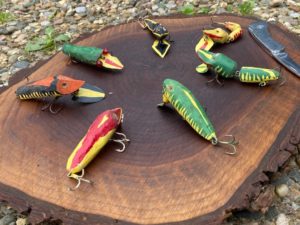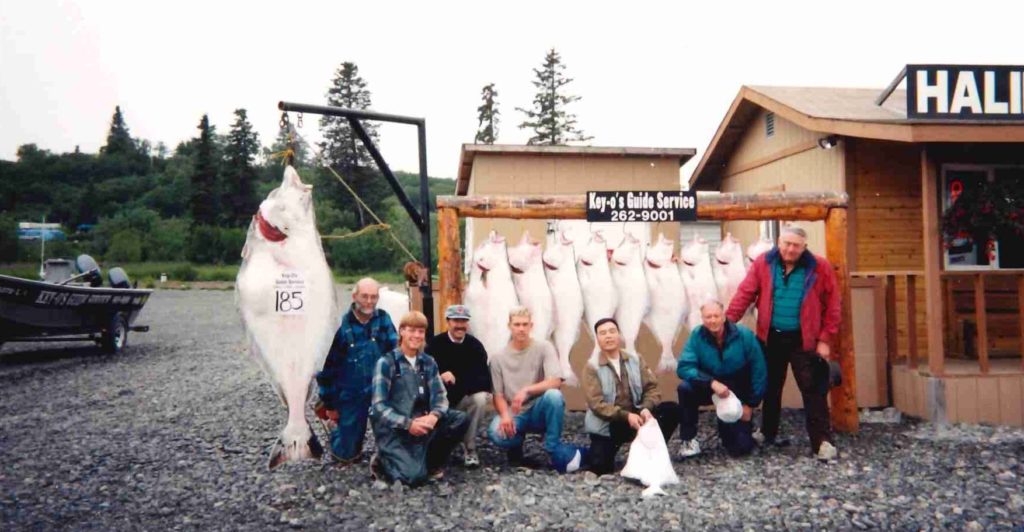Nothing to Do? Make Some Fishing Lures!
When I was 10 years old, to supplement the holiday excitement, a friend and I spent part of Christmas vacation making fishing lures, having received genuine fishing poles as gifts.

There is satisfaction from catching fish on lures you made yourself, even 70 years later.
To start the process, we made dozens of wooden plugs. These began as square blanks about nine inches long sawed out of a pine board, the extra length serving as a handle while we carved the plug with our pocketknives. The eyes of the lures were junk jewelry, and the front lips to make them dive and wiggle were cut from a tin can. Deeper divers were drilled out lengthwise and filled with BBs from our BB guns.
Hooks and tiny screw eyes came from the hardware store. There has, of course, been much attrition of this collection over the years – especially after we moved to Iowa and my children also used them. The seven survivors are shown below and have earned their semi-retirement.
Also when I was a youngster, the old guys were still using spoon lures they had made themselves from culinary spoons, so of course I had to try that. A thin streamlined metal lure, which is slightly concave on one side and convex on the other, has a wild irregular lurching motion when retrieved, which people imagine looks like the frantic escape of an injured fish. Toothy predators like northern pike apparently think so too because they strike hard with no hesitation at darting spoons. So I obtained an old set of a half dozen tablespoons, sawed off the handles, drilled little holes fore and aft, and attached a hook to each. Subsequently, I spent the better part of a day beside the river with a sturdy rock for an anvil and Dad’s ballpeen hammer, shaping spoons to different degrees of concavity to learn how they behaved.
Later I also cut and hammered spoons from a piece of thick-walled copper pipe. The soft copper lent itself to hammering in patterns of shallow dimples, which resembled rows of fish scales. The old guys said that real silver spoons were also soft enough to hammer into scale patterns, but I never found a real silver spoon to try that. I tried aluminum, but it was too light to cast very far with my primitive reel. None of my homemade spoons have survived, at least not in my tacklebox.
Leeches are sometimes good fish bait and I made leech lures by cutting them from leather. A worn-out leather work glove was still sound on the back and became a source of leech leather. I stored the tapered shapes by coiling them in the bottom of a jar with a bit of cod liver oil to restore leather flexibility. Spreading them out on newspaper adsorbed the excess and they still smelled fishy, which I imagined was important, and at least not contradicted by catching fish on them.
I never owned a fly rod, but I made assorted lures with hook and feathers, adding bits of metal for weight. These were cast using a long slender willow whip and a slightly longer piece of line, with no reel. They easily brought in their share of little fish, but pulling in a big one overhand was more of a challenge and hard on the hands.
So if you are looking for something to do, how about imagining a way to make your own fishing lures? And then making them? And then going out to try them? And while you’re doing that, enjoy the summer!

Being willing to improvise has served me well for fishing, inspired by a native American who told me that large halibut sometimes darts up from the bottom to nab migrating salmon. My 185 pound halibut was caught on a large salmon head retrieved from a dumpster.


